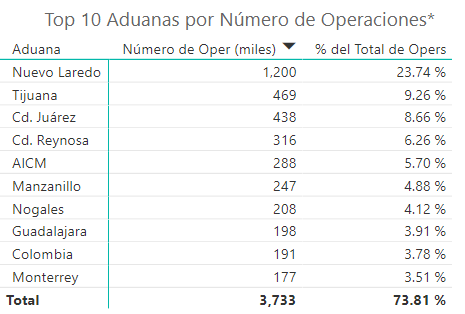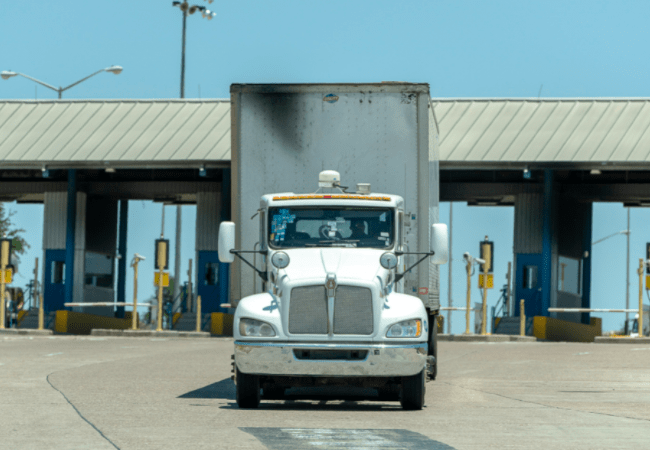Nuevo Laredo and Tijuana were the main customs offices in Mexico by the number of operations in the first quarter of 2022, according to data from the National Customs Agency of Mexico (ANAM).
Nuevo Laredo registered 1.2 million operations (23.74% of the total) and Tijuana had 469,000 operations (9.26 percent).
With the aim of improving tax collection, facilitating trade, increasing the efficiency of inspection and customs services and reinforcing national security, the Decree creating ANAM as a decentralized administrative body of the Ministry of Finance and Public Credit (SHCP) was published in the Official Gazette on July 14, 2021.

This decree grants ANAM technical and operational capacity, administrative and management autonomy, as well as the quality of tax and customs authority and powers to issue resolutions.
Then, among the main customs, Ciudad Juárez (438,000 operations), Ciudad Reynosa (316,000), the International Airport of Mexico City (288,000) and Manzanillo (247,000) were located.
Also in order to combat corruption and increase security at customs and ports in Mexico, on December 7, 2020, reforms were approved to the Organic Law of the Federal Public Administration, the Maritime Navigation and Commerce Law, Navigation and Commerce and the Ports Law to transfer some of the powers of the Ministry of Communications and Transportation, including the administration and surveillance of maritime and port security, to the Secretary of the Navy.
Main customs
The Federal Tax Attorney’s Office (PFF) and the Confederation of Associations of Customs Agents of the Mexican Republic (CAAAREM) signed a collaboration agreement on December 10, 2021 to combat tax evasion, smuggling and corruption in foreign trade.
The agreement alerts customs agents about the risks and consequences of tax and customs violations, and will develop the forms, mechanisms and conditions to create a compliance program, as well as related training, workshops, conferences and seminars.
Other outstanding customs, with the same measurement, were Nogales (208,000 operations), Guadalajara (198,000), Colombia (191,000) and Monterrey (177,000).
Mexico uses an economic development model based on increasing its returns from foreign trade. To achieve this, Mexico focuses mainly on expanding its total exports through various commercial, fiscal, financial and promotional measures to grow and increase the competitiveness of its non-oil exports.
![]()

